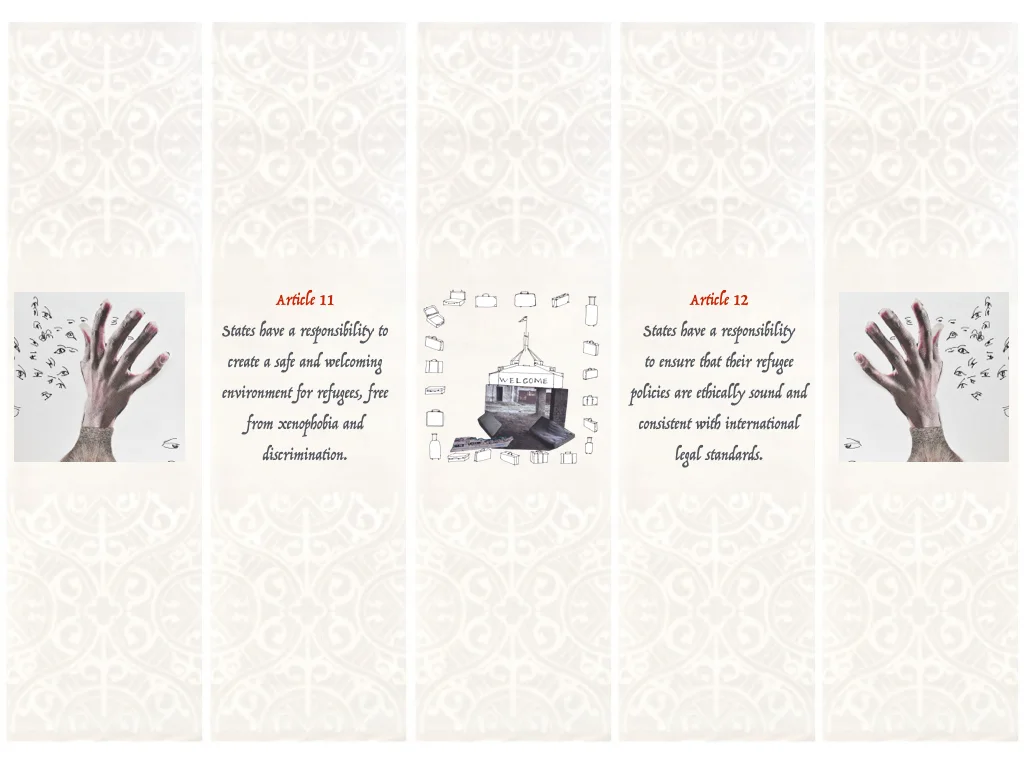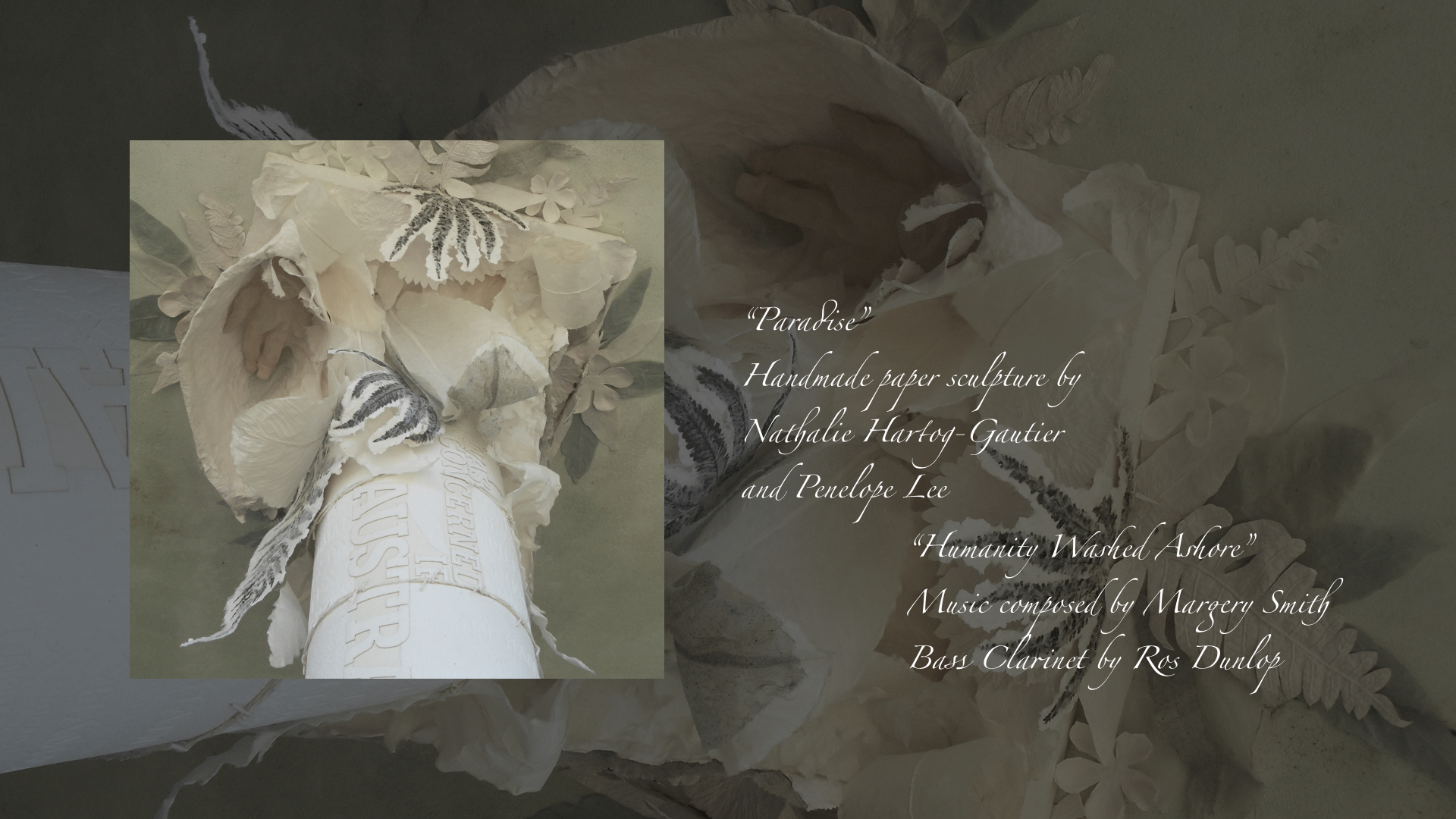







Your Custom Text Here
Exhibited at Grafton Regional Gallery
Mary MacKillop Museum Project Space
Collaboration Nathalie Hartog-Gautier and Penelope Lee
Paper casting and de-bossing on hand made paper by the artists.
Imaging the Margin examines the marginalisation of refugees and contemplates our responsibilities as a nation.
It is in this spirit that we honour those who flee to our shores seeking a safe haven. Marooned at its border and relegated to the margins of humanity, refugees deserve more than a moment’s consideration. For so many, the search for refuge ends at the edges of a paradise lost. By offering a new perspective on the literal, conceptual and cultural space of the margin, we engage in critical and theoretical debate about memory, identity and place in contemporary society.
Handmade paper, with watermarked margins and imprinted texts, is the medium used to convey these concepts. Pressed into its surface, words bear silent witness to broken promises and lives lost at sea, while ephemeral images illuminate the contradictions between political and humanitarian values. Paper is strong and fragile; vulnerable to the forces of nature yet lasting over centuries; able to be broken down and remade anew. It is an apt metaphor for the endurance and resilience of those who so bravely seek asylum.
Photography by John Lee
Exhibited at Grafton Regional Gallery
Mary MacKillop Museum Project Space
Collaboration Nathalie Hartog-Gautier and Penelope Lee
Paper casting and de-bossing on hand made paper by the artists.
Imaging the Margin examines the marginalisation of refugees and contemplates our responsibilities as a nation.
It is in this spirit that we honour those who flee to our shores seeking a safe haven. Marooned at its border and relegated to the margins of humanity, refugees deserve more than a moment’s consideration. For so many, the search for refuge ends at the edges of a paradise lost. By offering a new perspective on the literal, conceptual and cultural space of the margin, we engage in critical and theoretical debate about memory, identity and place in contemporary society.
Handmade paper, with watermarked margins and imprinted texts, is the medium used to convey these concepts. Pressed into its surface, words bear silent witness to broken promises and lives lost at sea, while ephemeral images illuminate the contradictions between political and humanitarian values. Paper is strong and fragile; vulnerable to the forces of nature yet lasting over centuries; able to be broken down and remade anew. It is an apt metaphor for the endurance and resilience of those who so bravely seek asylum.
Photography by John Lee
photo still from a 13 mn video projected on 5 watermark hand made paper panels, 250 x 350 cm
photo still from a 13 mn video projected on 5 watermark hand made paper panels, 250 x 350 cm
photo still from a 13 mn video projected on 5 watermark hand made paper panels, 250 x 350 cm
Video: Imaging the Margin [13:36 min]
The illuminated artists' book, Imaging the Margin, is a collaborative project by Penelope Lee and Nathalie Hartog-Gautier. Drawing on the Universal Declaration of Human Rights, it reflects on the current marginalisation of refugees and contemplates our humanitarian values and responsibilities as a nation.
Paradise Lost
photo still from a 12 mn video
Paradise Lost
photo still from a 12 mn video
Video: Paradise Lost [16:06 mins]
The sculpture, Paradise, was made by artists, Nathalie Hartog-Gautier and Penelope Lee, as a memorial to those who lost their lives at sea, while seeking asylum in Australia. Their names are impressed into surface of the column beneath the capital representing the idea of paradise, a place of safety, peace and beauty, now lost to those who came in search of a safe haven. We also remember them here.
Music Humanity Washed Ashore for Solo Bass Clarinet composed by Margery Smith and performed by Ros Dunlop.